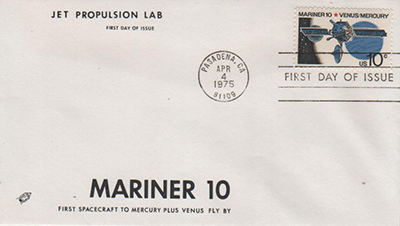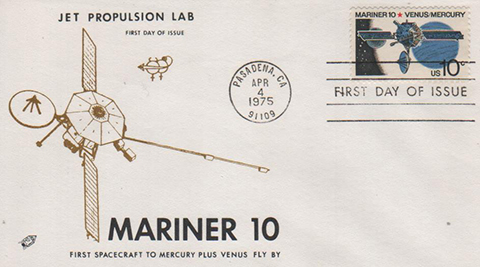With or without cachet?Postmark is the key element in Astrophilately world. If postmark is linked in place and date with a space event then the cover becomes a space cover to be collected in our albums.
But what is the second element most important in Astrophilately? Is perhaps the stamp or the cachet?
Meanwhile stamp reflects a correct postal rate, it is indifferent what stamp is. Even if stamp is not devoting any space topic, the space cover will be considered correct if previously postmark is appropriate (in terms place/date).
As example we can compare two identical space covers produced by same cachet maker but with different stamp. If both are common stamps, there will be no great value of one over the other.
However, when we compare two space covers referred to same space event but made by different cachet makers, then yes, we value one better than the other in function of scarcity and cachet maker prestige, i.e. cachet determine the value of the space cover.
We all have in our collections or have seen blank space covers, or covers with no cachet. Maybe nobody made a cachet at that time or simply any space cachet was applied. So, blank covers with no cachet, or just with a pencil or type note, or with cachet on reverse side are present in any space collector's home. Most of the times, we hide these covers or add a note (looking for another one cacheted to replace it…) or we think in adding an add-on cachet.
The question here would be? If we had the chance to choose between a cacheted space cover or a non cacheted space cover… which we would choose?.
Let's see a sample.
Top cover, really a first-day-cover was postmarked Apr 4, 1975 at Pasadena, where JPL is located. The cachet shows the image of the Mariner 10 spacecraft. A clean, clear and very correct FDC.
Below, similar first-day-cover without image. Although text is shown. It is enough this text to consider too this cover as a very correct FDC? Because we really have all the information.

Furthermore, this FDC without image is scarcer than previous one.
Obviously, this sample has a trick, as both FDC are really cacheted. Meanwhile the first cover has two ink passes (black for text and light brown for spacecraft image) the second one has only one ink pass (black for text).
In summary, we all love space cacheted covers, but if crucial information is provided in text, it is necessary an image as cachet?
Finally, we collect cachets or postmarks?
Please, feel free to enter your opinion. Any appreciation is valid. Absolute truth doesn't exist in the life, and even less in Astrophilately, a hobby that allows you to express your space knowledge in combination with your philatelic knowledge.













